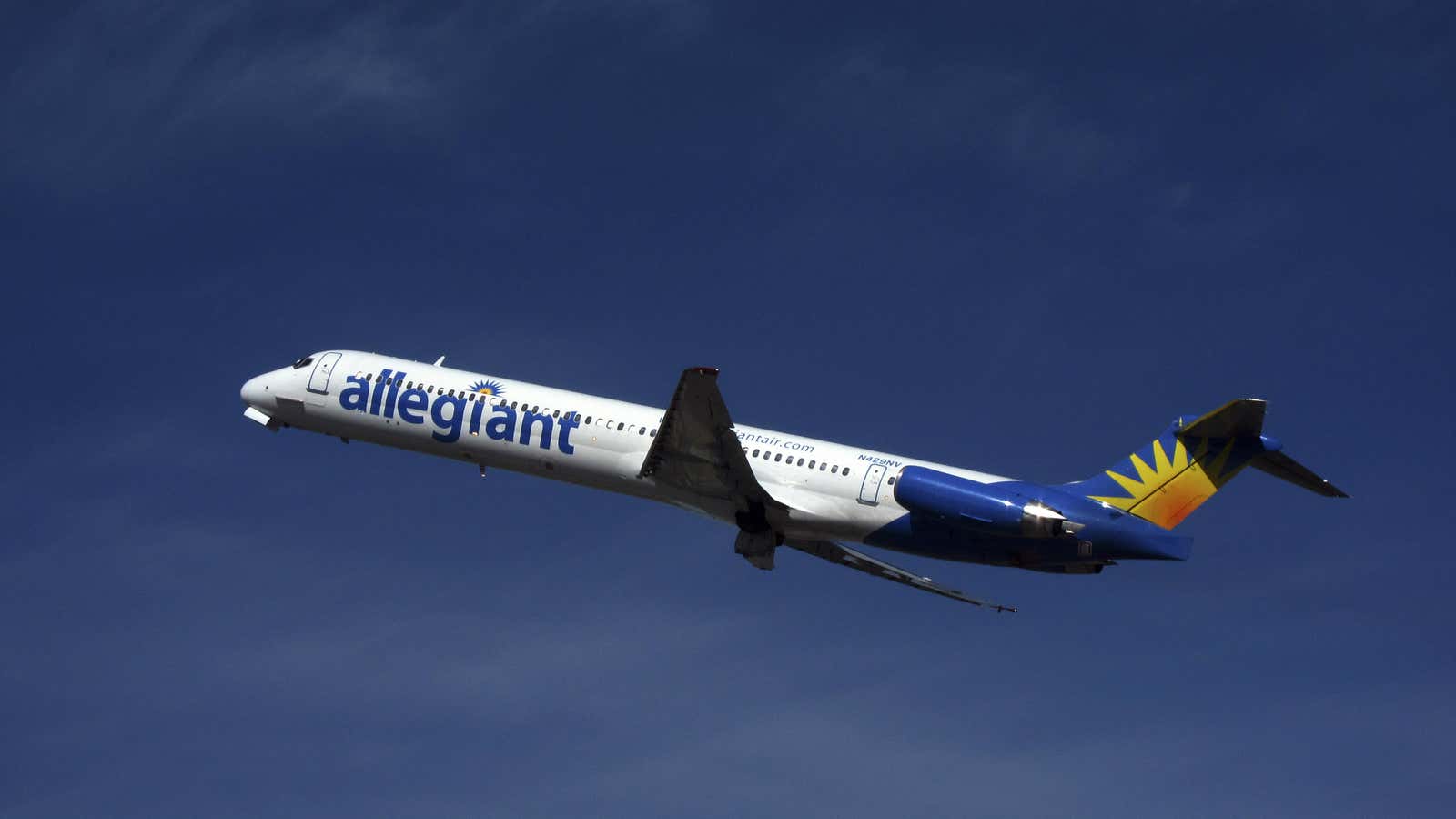Alarm bells rang for travelers when several aviation officials said on Sunday’s 60 Minutes report that they refuse to fly on US budget airline Allegiant Air.
According to the program, Allegiant had more than 100 serious mechanical incidents—including emergency landings, aborted takeoffs, engine failures, and cabins filling with smoke—between January 2016 and October 2017, though no fatal incidents have occurred since the airline was founded. In response to the report’s findings, Allegiant released an internal memo describing the segment as “negative and inaccurate” and that it intends to fight back.
The damning 60 Minutes report may not come as a surprise to some travelers and sector professionals—Allegiant’s safety record has made headlines before. However it was first time that the wider public has been privy to what industry insiders have reportedly felt for some time. As Skift put in its coverage of the report: ”Insiders do talk about avoiding Allegiant—it’s a bit of an open secret.”
Given that Allegiant is regulated by the Federal Aviation Administration (FAA), this can be particularly alarming for passengers who trust that American-regulated airlines are safe. (The FAA told 60 Minutes that they are “taking the appropriate actions with regard to Allegiant.”) In addition, since Allegiant’s rather successful business model is offering ultra-low fares out of under-served airports, it could lead passengers to believe that all low-cost airlines are cutting corners in service of profits over safety. So how can the average passenger assess the safety of an airline they’ve never flown before, at home or abroad?
It’s important for nervous flyers to know that air travel remains overwhelmingly safe, statistically speaking. That said, here are some factors to look out for.
Aircraft Type
One of alleged factors in Allegiant’s poor safety record is their aircraft type and age. As The Points Guy reported, “Allegiant operates the oldest fleet of aircraft in the US, including 30% of those planes being dated and gas-guzzling McDonnell-Douglas MD-80s, almost all of which were purchased second-hand from foreign carriers.”
Generally, newer fleet aircraft will be safer, as manufacturers will provide pilot training when they deliver the planes. The good news is many low-cost carriers—especially ones that operate long haul routes—are upgrading their fleets to more fuel-efficient, and thus less costly, models to offer those low-cost flights. Norwegian Air, for example, has one of the youngest fleets in the industry.
Code-shares and airline alliances
There is no single international body that regulates the safety of airlines, so when you go overseas, the calculation changes slightly. The European Union is known for its stringent safety standards and operates a “blacklist” of airlines that are not allowed to operate in Europe (if an airline is banned there, you perhaps shouldn’t fly it anywhere). Furthermore, any foreign airline that partners with an American carrier—either through a code-share or through one of the three global alliances of SkyTeam, OneWorld, or Star Alliance—has to submit to a safety review which is reviewed by the FAA, which is a helpful indication that it’s safe to fly.
Civil aviation authority
The UN’s International Civil Aviation Organization (ICAO) audits the civil aviation authorities of nations around the world. A highly-ranked authority (one with a score of 10) generally means that airlines operating in that country will be held accountable to safety standards. Lower scores should invite caution.
